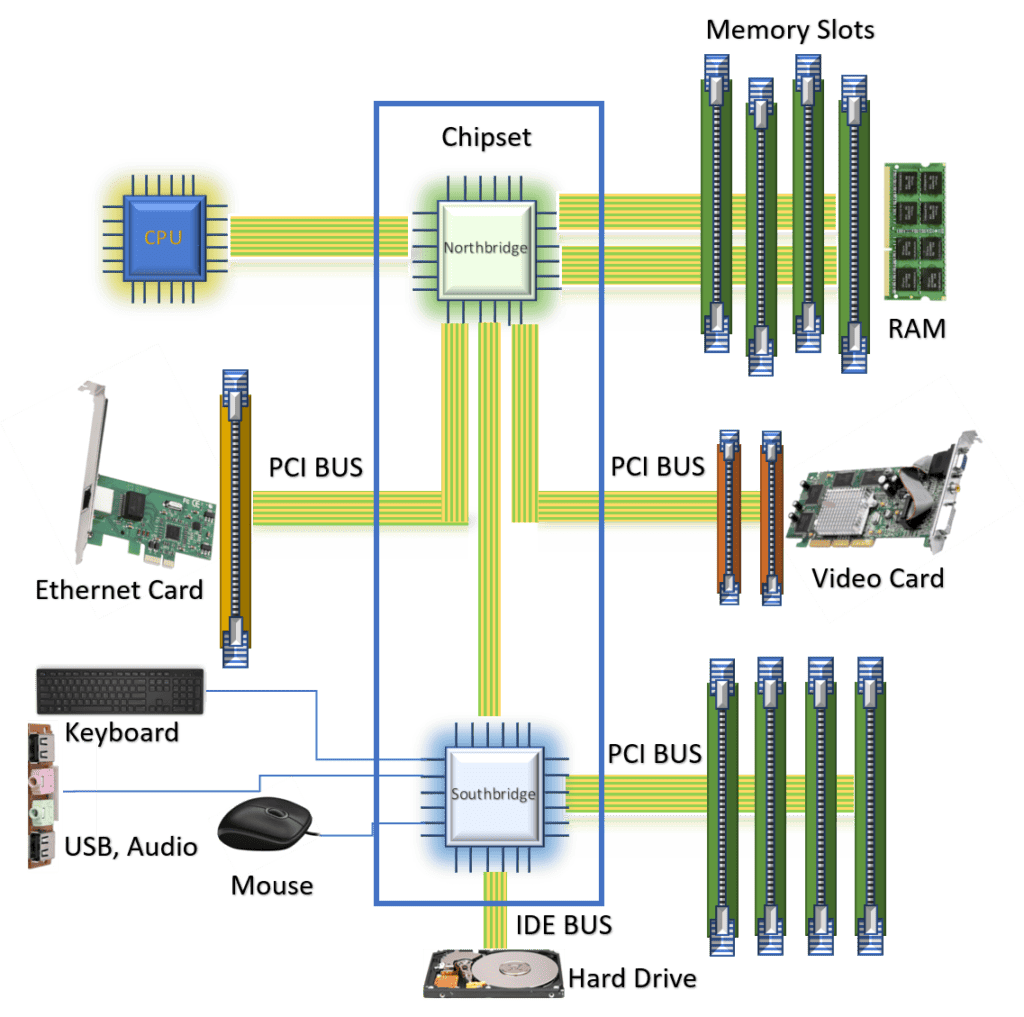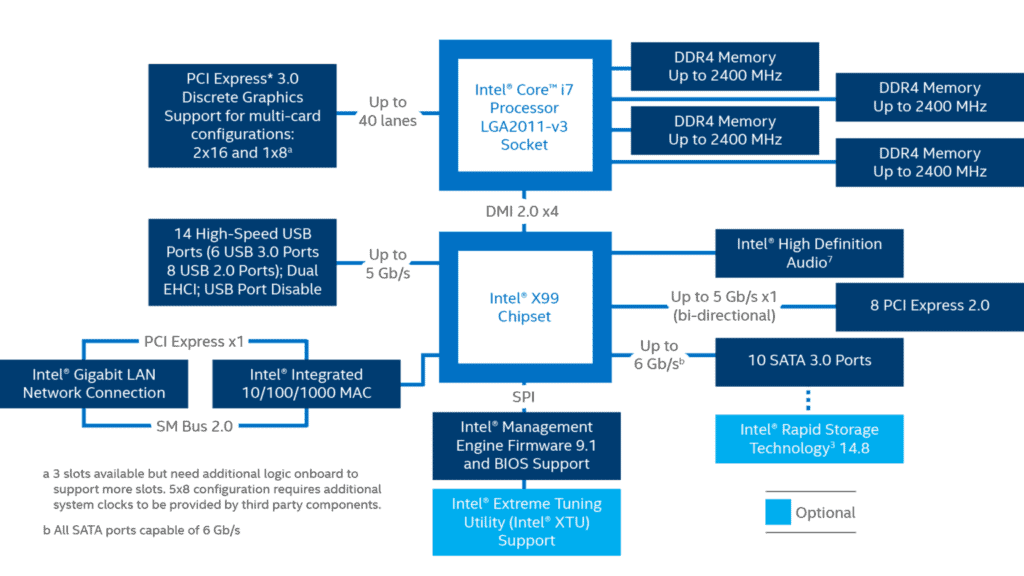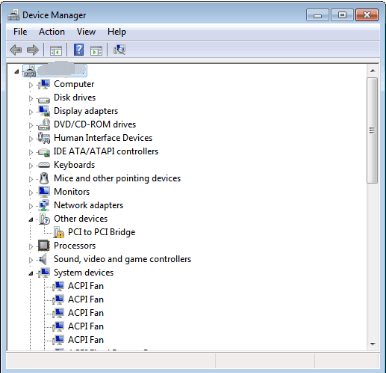1. 简介
早期的个人计算机主板上,通常布满了各种分散的芯片,这些芯片各自负责不同的功能,但同时也带来了接口复杂、性能瓶颈等问题。为了解决这些问题,芯片组(Chipset)的概念应运而生。芯片组将这些功能整合到少数几个芯片中,从而提升整体性能和兼容性。
随着 PCI 总线的引入,主板设计进入了一个新的阶段,芯片组成为核心组件之一。现代主板的主要组成部分包括:CPU、内存、时钟、总线、BIOS 和芯片组。其典型布局如下图所示:

2. 什么是芯片组?
芯片组(Chipset)是主板上一组负责协调各种硬件组件之间通信的核心芯片。它通常由两个主要部分组成:北桥(Northbridge)和南桥(Southbridge)。
- 北桥芯片(Northbridge)位于主板上靠近 CPU 的位置(即“北”侧),负责高速组件之间的通信,例如内存(RAM)、PCIe 控制器以及南桥芯片。
- 南桥芯片(Southbridge)位于主板的下方(即“南”侧),负责低速设备的管理,例如 USB 接口、硬盘、音频设备等。
通过北桥和南桥的配合,CPU、内存和各种外设之间得以高效协同工作。
3. 北桥芯片(Northbridge)
北桥芯片连接了以下几类总线:
- 内存总线(Memory Bus):用于与内存(RAM)通信,执行内存访问操作。
- 前端总线(Front Side Bus, FSB):这是 CPU 与北桥之间的通信通道。
- PCI 总线(PCI Bus):连接北桥与南桥,也用于连接显卡、网卡等扩展设备。
- L2 缓存总线(L2 Cache Bus):早期用于连接 CPU 和外部缓存,在现代 CPU 中缓存已集成到 CPU 内部,因此该总线已逐渐淘汰。
不同总线使用不同的通信协议(语言),北桥芯片不仅要充当这些总线之间的“交通调度员”,还要在不同协议之间进行数据转换。
✅ 踩坑提醒:FSB 和内存总线频率不匹配时,可能导致系统性能下降,选择主板时要注意其支持的总线频率是否匹配 CPU。
4. 南桥芯片(Southbridge)
南桥芯片负责管理主板上各种低速外设接口,包括:
- PCI 控制器:与北桥通信,并连接 PCI 设备。
- IDE 控制器:用于连接硬盘、光驱等存储设备。
- ISA 控制器:老式扩展总线接口,已被淘汰。
- USB 控制器:取代了 PS/2、串口、并口等传统接口。
- X-Bus 接口:用于支持 PS/2 键盘和鼠标。
- DMA 控制器:允许设备(如硬盘)直接访问内存,无需 CPU 参与。
- 系统定时器(System Timer):产生时钟脉冲,用于引导过程中的蜂鸣提示。
- 中断控制器(Interrupt Controller):管理各种中断请求,以协助 CPU 进行任务切换。
所有连接在南桥上的设备,若需与 CPU 通信,都必须通过北桥中转。因此,随着技术的发展,传统北桥-南桥架构逐渐被更高效的单芯片架构所取代。
例如,Intel 的 X99 芯片组采用了单芯片设计,将原本属于北桥的功能(如内存和图形控制器)集成进 CPU,而南桥则负责剩余的低速接口功能:

5. 芯片组驱动程序(Chipset Drivers)
芯片组驱动程序负责支持主板上的各种关键功能,如 USB、PCI 等。只有在驱动程序兼容的前提下,芯片组和设备之间才能正常协作。
操作系统安装过程中会自动安装相关驱动。但随着时间推移,驱动可能会变得过时或不兼容,导致性能下降或功能异常。在 Windows 系统中,可以通过 设备管理器(Device Manager)查看驱动状态。若某个设备驱动有问题,系统会显示黄色感叹号图标:

✅ 建议:务必从主板厂商官网下载最新驱动,以确保系统稳定性和硬件兼容性。升级失败时,可使用系统还原功能回滚驱动。
6. 芯片组的作用与优势
芯片组决定了主板的以下几个关键能力:
- ✅ 外设(如 USB、硬盘)的兼容性
- ✅ 扩展卡(如显卡)的支持能力
- ✅ 超频(Overclocking)能力,提升系统性能
因此,芯片组在主板选型中起着至关重要的作用。不同档次的主板通常也对应了不同级别的芯片组配置。
7. 总结
本文介绍了芯片组的基本概念、架构组成及其作用。芯片组不仅是主板的“翻译官”和“交通调度员”,还决定了外设的兼容性、系统的扩展能力和超频潜力。
随着 CPU 技术的进步,北桥的功能逐渐被集成进 CPU,芯片组的结构也趋于简化,但其在主板中的核心地位依旧不可替代。